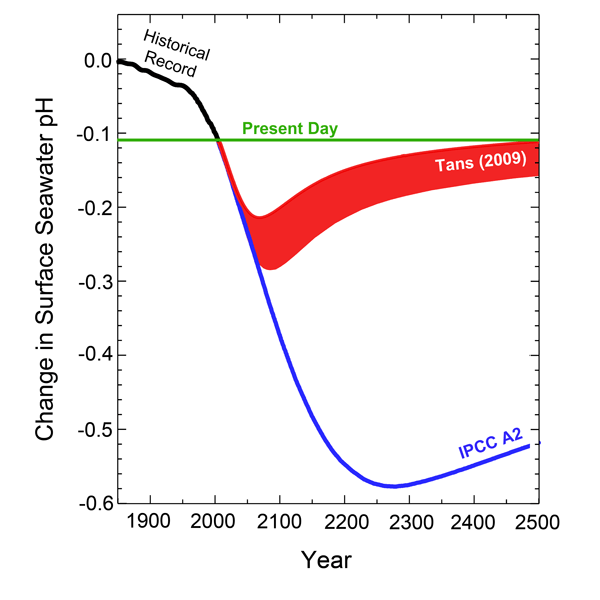Reference
Lombard, F., da Rocha, R.E., Bijma, J. and Gattuso, J.-P. 2010. Effect of carbonate ion concentration and irradiance on calcification in planktonic foraminifera. Biogeosciences 7: 247-255.
Background
"Planktonic foraminifera," in the words of the authors, "are widespread calcifying protozoa, responsible for 32-80% of the global deep-ocean calcite fluxes (Schiebel, 2002)."
What was done
Working with specimens of Orbulina universa collected by scuba divers off the coast of Catalina Island, California, and Globigerinoides sacculifer obtained near Puerto Rico, USA, Lombard et al. cultured them under high and low irradiances (335 and 35 umol photons m-2 s-1, respectively) in filtered sea water that had its pH and carbonate ion concentration -- [CO32-] -- manipulated by adding NaOH or HCl to it. Among other things, the data they collected in these experiments included "measurements of the initial and final size (um), the survival time (days from collection to gametogenesis), and final weight of the shell (ug)," but only for "individuals that underwent gametogenesis and grew at least one chamber."
What was learned
The four researchers report that "under the IS92a 'business as usual' scenario as defined by the Intergovernmental Panel on Climate Change and projected for the year 2100," their results suggest that "in 2100, the rate of calcification of G. sacculifer and O. universa could decline by 6-13% compared to recent rates," which is not a very big drop. In addition, they say that "the future increase in temperature [predicted by the IPCC] could increase the production of calcite by foraminifera, counteracting the negative impact of ocean acidification," which could well reduce the expected decline in calcification to next to nothing. And the results of the analysis of Tans (2009), which are included in the figure below, suggest that (1) the true decline in oceanic pH by the year 2100 is more likely than not to be only about half of that projected by the IPCC, and that (2) this drop will begin to be ameliorated after 2100, gradually returning oceanic pH to present-day values beyond 2500.

Figure 1. Change in surface seawater pH vs. time as observed for the prior century and a half and as calculated by the IPCC and Tans (2009) for the next five centuries.
What it means
In light of these several considerations, it could well be that climate-alarmist "concerns" about CO2-induced ocean acidification are but a tempest in a teapot and much ado about next to nothing -- in this case, at least.
References
Schiebel, R. 2002. Planktic foraminiferal sedimentation and the marine calcite budget. Global Biogeochemical Cycles 16: 1010.1029/2001GB001459.
Tans, P. 2009. An accounting of the observed increase in oceanic and atmospheric CO2 and an outlook for the future. Oceanography 22: 26-35.
Reviewed 26 May 2010



